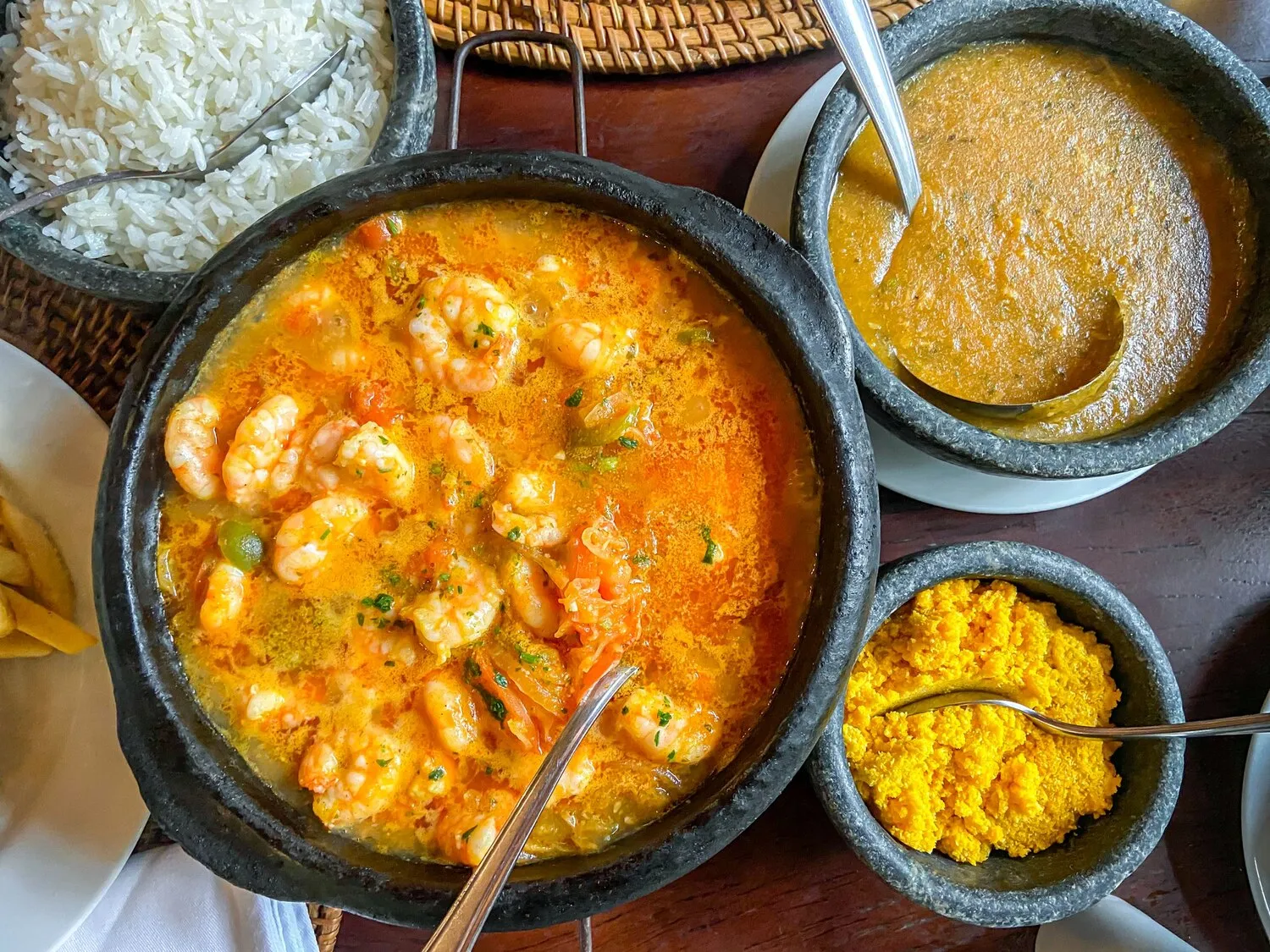
Moqueca Baiana
Another variation of the Brazilian seafood stew, influenced by African flavors, commonly including dendê oil (palm oil) and coconut milk, in addition to fish and vegetables.
Nutrition Facts
* The % Daily Value (DV) tells you how much a nutrient in a serving of food contributes to a daily diet. 2,000 calories a day is used for general nutrition advice.
Estação da Moqueca
Moqueca Baiana is a vibrant seafood stew deeply rooted in the history of Bahia, Brazil. Its origins lie in the blending of Indigenous Brazilian culinary techniques with African ingredients brought by enslaved people. The dish reflects the cultural exchange between these groups, creating a unique and flavorful expression of Bahian cuisine.
Moqueca Baiana is more than just food; it's a symbol of Bahian identity, heritage, and communal dining. It is often prepared and enjoyed during special occasions and gatherings, representing hospitality and cultural pride.
Regional Identity
Moqueca Baiana is a quintessential dish of Bahia, a state in northeastern Brazil known for its strong African cultural influences. The dish is a significant part of Bahian culinary identity and is closely associated with the region's history and traditions.
Communal Meal
Traditionally, Moqueca is served in a clay pot at the center of the table, encouraging communal eating. Sharing the dish is a social experience that strengthens bonds between family and friends.
Celebratory Dish
Moqueca Baiana is often prepared for special occasions, such as birthdays, holidays, and religious festivals. Its rich flavors and vibrant presentation make it a festive and celebratory meal.
Moqueca Baiana boasts a complex and layered flavor profile, characterized by the rich sweetness of coconut milk, the distinctive earthiness of dendê oil, and the freshness of seafood and vegetables.
The key flavor drivers are dendê oil (palm oil), which imparts a reddish-orange hue and a unique, slightly smoky flavor; coconut milk, which adds creaminess and sweetness; and the medley of fresh seafood (typically fish, shrimp, or a combination), tomatoes, onions, bell peppers, and cilantro. Lime juice adds a bright acidity to balance the richness. Other spices, such as garlic, ginger, and malagueta peppers, contribute to the dish's overall depth and complexity.
Freshness is Key
Use the freshest seafood and vegetables available. The quality of the ingredients significantly impacts the final flavor of the dish.
Dendê Oil Substitute
If dendê oil is unavailable, a small amount of annatto oil (achiote oil) can be used for color, but it won't replicate the unique flavor of dendê.
Cooking Vessels
Traditionally cooked in a clay pot (panela de barro), which imparts a unique earthy flavor. If a clay pot is unavailable, a heavy-bottomed pot or Dutch oven can be used.
Spice Level
Adjust the amount of chili peppers (malagueta peppers are traditional) to your preferred level of spiciness.
Explore additional Stew dishes and restaurants
Explore StewDiscover top dining spots and culinary experiences in Macaé.
Explore MacaéLearn more about the food culture, restaurant scene, and culinary heritage of Brazil.
Explore Brazil
